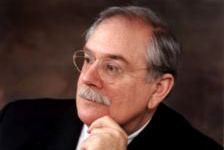Name David Evans | ||
 | ||
Books A Critical Assessment of Neo-Marxian Trade Theories: Paper Prepared for the 10th Conference of Economists, Australian National University, Canberra, 24-28 August, 1981 People also search for David Evans, H. David Evans, David. Evans | ||
David A. Evans (born 1941) is the Abbott and James Lawrence Professor Emeritus in the Department of Chemistry and Chemical Biology at Harvard University. He is a prominent figure in the field of organic chemistry and his research focuses on synthetic chemistry and total synthesis, particularly of large biologically active molecules. Among his best-known work is the development of aldol reaction methodology (for example, Evans' acyl oxazolidinone method).
Contents
Early life and education
Evans was born on January 11, 1941, in Washington, D.C.. He received his A.B. from Oberlin College in 1963, where he worked with Norman Craig. He began his graduate work at the University of Michigan with Robert E. Ireland, but moved with the Ireland group to the California Institute of Technology and received his Ph.D. from Caltech in 1967.
Academic career
Evans began his independent research career at the University of California, Los Angeles, where he joined the faculty in 1967 and became a full professor in 1974. He then moved to the California Institute of Technology and remained there until 1983, when he moved again to Harvard University - a decision he later described as difficult. He was appointed the Abbott and James Lawrence Professor of Chemistry in 1990, served as chair of the Department of Chemistry and Chemical Biology from 1995 to 1998, and retired from the faculty, assuming professor emeritus status, in 2008.
Research
Evans has made many scholarly contributions to the field of organic chemistry. Although he is best known for his work on the aldol reaction, he has also developed methodology for anionic oxy-Cope rearrangements, metal catalyzed hydroborations, and catalytic, enantioselective reactions based on bis-oxazoline (box) ligands. The Evans–Saksena reduction and Evans–Tishchenko reaction take their names from him. He is also well-known for preparing a set of unpublished though widely disseminated lecture notes for Chemistry 206, a graduate-level mechanistic organic chemistry course at Harvard.
